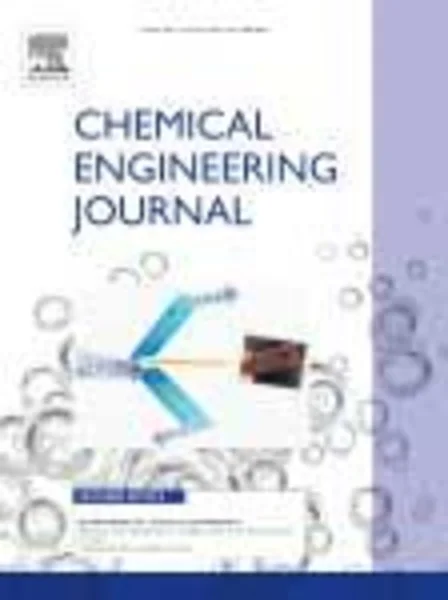-
the role of hydrogen partial pressure in the gas phase hydrogenation of p-chloronitrobenzene over alumina supported au and pd: a consideration of reaction thermodynamics and kinetics
جزئیات بیشتر مقاله- تاریخ ارائه: 1392/01/01
- تاریخ انتشار در تی پی بین: 1392/01/01
- تعداد بازدید: 657
- تعداد پرسش و پاسخ ها: 0
- شماره تماس دبیرخانه رویداد: -
the gas phase hydrogenation of p-chloronitrobenzene (p-cnb) over alumina supported au and pd has been subjected to thermodynamic and kinetic analyses where the h2partial pressure was varied from excess (h2/p-cnb up to 2300) to lean (stoichiometric) conditions. the catalysts have been characterised by temperature-programmed reduction (tpr), h2 chemisorption/temperature-programmed desorption (tpd), bet surface area/porosity, x-ray diffraction (xrd), x-ray photoelectron spectroscopy (xps) and transmission electron microscopy (tem) measurements. both catalysts exhibited nano-scale metal particles (mean diameter = 4.5 nm (au) and 2.4 nm (pd)) with the formation (from xps analysis) of electron-rich pdδ− but no significant electron transfer between au and al2o3. under thermodynamic control, cyclohexane is the only product where h2/p-cnb ⩾ 10 with product (p-chloroaniline, aniline, chlorobenzene, benzene and cyclohexane) dependence on h2/p-cnb in the range 1–8; at a given h2/p-cnb, reaction temperature (373–473 k) has a negligible effect. under conditions of catalytic control, au/al2o3 generated p-chloroaniline as the sole product while pd/al2o3 promoted hydrodechlorination to nitrobenzene and hydrogenation to aniline. a kinetic model is presented that accounts for the rate dependence on h2 partial pressure, where the maximum turnover frequency delivered by au/al2o3 (with a lower h2 adsorption coefficient) was an order magnitude lower than that recorded for pd/al2o3. adsorption ofp-cnb on pdδ−via the aromatic ring is proposed that serves to activate both –no2 and –cl for attack whereas au/al2o3 selectively activates –no2, leading to exclusive production of p-chloroaniline.
مقالات جدیدترین رویدادها
-
استفاده از تحلیل اهمیت-عملکرد در ارائه الگوی مدیریت خلاقیت سازمانی و ارائه راهکار جهت بهبود
-
بررسی تاثیر ارزش وجوه نقد مازاد بر ساختار سرمایه شرکت های پذیرفته شده در بورس اوراق بهادار تهران
-
بررسی تأثیر سطح افشای ریسک بر قرارداد بدهی شرکت های پذیرفته شده در بورس اوراق بهادار تهران
-
بررسی تأثیر رتبه بندی اعتباری مبتنی بر مدل امتیاز بازار نوظهور بر نقد شوندگی سهام با تأکید بر خصوصی سازی شرکت ها
-
تأثیر آمیخته بازاریابی پوشاک ایرانی بر تصویر ذهنی مشتری پوشاک ایرانی (هاکوپیان)
-
تبیین نقش کاربردی فرهنگ و آموزه های اسلامی بر کالبد معماری مسکن در ایران
-
مدل شناختی - رفتاری داگاس برای اختلال اضطراب فراگیر
-
تحلیل و بررسی تزیینات وابسته در معماری اسلامی با تاکید بر نقوش اسلیمی و هنر خوشنویسی و جایگاه آن در معماری امروز
-
بررسی تحلیل های دینامیکی استاندارد 2800 و مقایسه تا روش قابلیت اعتماد سازه ها در تعیین بیشینه جابه جایی نسبی
-
development of electronic and electrical materials from indian ilmenite
مقالات جدیدترین ژورنال ها
-
مدیریت و بررسی افسردگی دانش آموزان دختر مقطع متوسطه دوم در دروان کرونا در شهرستان دزفول
-
مدیریت و بررسی خرد سیاسی در اندیشه ی فردوسی در ادب ایران
-
واکاوی و مدیریت توصیفی قلمدان(جاکلیدی)ضریح در موزه آستان قدس رضوی
-
بررسی تاثیر خلاقیت، دانش و انگیزه کارکنان بر پیشنهادات نوآورانه کارکنان ( مورد مطالعه: هتل های 3 و 4 ستاره استان کرمان)
-
بررسی تاثیر کیفیت سیستم های اطلاعاتی بر تصمیم گیری موفق در شرکتهای تولیدی استان اصفهان (مورد مطالعه: مدیران شرکتهای تولیدی استان اصفهان)
-
بررسی و شناخت دعاوی قابل سازش در نظام حقوقی ایران
-
شناسایی اولویت بندی موانع پیاده سازی کنترل داخلی موفق در شرکت های شهرک صنعتی استان فارس
-
شناسایی و رتبه بندی عوامل کلیدی موفقیت مدیریت کیفیت زنجیره تامین در شرکت های آسانسوری شهر سنندج
-
بررسی رابطه میزان پرخاشگری و انزوا اجتماعی دانشجویان تاریخ و علوم تربیتی دانشگاه فرهنگیان لرستان پردیس آیت الله کمالوند
-
بازخوانی سیر تحولات مرمت و توسعه مسجد جامع بروجرد




سوال خود را در مورد این مقاله مطرح نمایید :